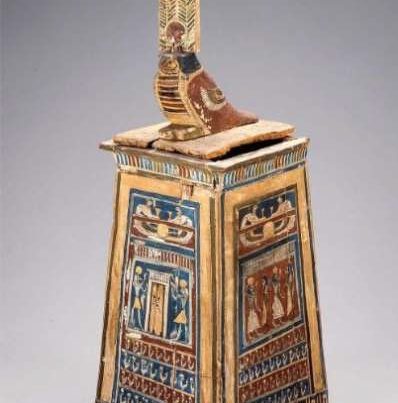by Abdelmoniem M. Abdelmoniem , Naglaa Mahmoud and Wael S. Mohamed
ABSTRACT
The present study focuses on the definition of fungi and bacteria from the late period wooden coffin at Saqqara dating back to the 26th dynasty (664–525 BC). It highlights the importance of the black resin layer in resisting microbial infection. This polychrome wooden coffin was covered by a ground layer and a painted layer externally and by a layer of black resin internally. The wooden coffin had a lot of deterioration factors, e.g. the loss of the painted layer and ground layers, as well as a thick layer of dust. Potato Dextrose Agar (PDA) was used for the cultivation of fungi, and nutrient agar was used to cultivated bacteria. Microbial infections were identified using light microscopy after their cultivation. The types of fungi and bacteria: The mold fungi were Trichoderma, Acremonium SP Aspergillus niger, Aspergillus flavus, and Penicillium SP, while the bacteria were Micrococcus sp. (G+), Micro Bacillus sp. (G+) and Short Bacillus sp. (G+(. The fungi and bacteria were on wood and color, while black resin any fungi, and bacteria were absent because the black resin contained anti-fungal and anti-bacterial materials.
![]()



